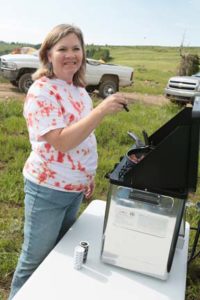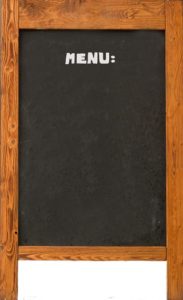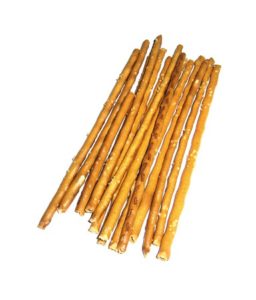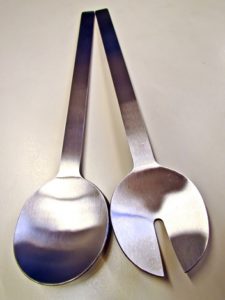Why having a cook responsible for dietary issues on trek is a good idea

It would be ideal to have a larger stove especially if you have very many people. This small camp stove was a challenge at times.
Whether your stake is big or small, the food is always a big deal and can be a huge challenge to make sure everyone is fed and healthy, especially on trek. When dietary restrictions like gluten free are added to the mix and it can be complicated. Then, you also have other allergies and dietary issues to work with and the complications can multiply.
Having a person over that smoothes out many of those issues, making it easier for leaders to focus on the larger group without worrying that the group with dietary issues will fall through the cracks. It also helps the youth and leaders going, with these dietary issues more peace of mind knowing they don’t have to worry as much about the food and what they are going to eat and how high the risk is of having a reaction.
It is stressful to send your kid to camp especially when dietary restrictions are involved. It would be much easier to keep your kids home, but we don’t want to do that! We want our kids to have the same experiences with their friends, ward members and stake. Food shouldn’t hold them back. They don’t want to be put on the spot or made to feel weird and someone who knows how to handle these issues is helpful to have on your trek leadership team.
Our Trek Experience
 My husband and I were assigned to do food on Trek for all of the people who have allergies and any other dietary restrictions. I know how to do gluten free foods really well, but needed to brush up on dairy free and some of the allergies of the other trekkers.
My husband and I were assigned to do food on Trek for all of the people who have allergies and any other dietary restrictions. I know how to do gluten free foods really well, but needed to brush up on dairy free and some of the allergies of the other trekkers.
I had my coolers and a separate camp stove, cookware and utensils. The allergy/dietary restricted trekkers were sent to me every meal and we had a line set up just for them. This really is an ideal way of doing it. Always set aside all food and condiments needed for each meal in an allergy friendly line. Less mistakes and problems happen when done this way.
Before Trek
Menu
 If possible, your dietary cook should be part of the meal planning or at least be given all the details. This not only includes the menu, but how it is all going to work at meal times. (Setting up, traveling, every meal that needs heat and tables. Details about the menu and condiments. If the allergy line has condiments and the other line doesn’t, kids will sneak over to use and get what they want.) Our wards ate in shifts and it was helpful to know what ward was eating when, so I knew who to keep an eye out for and what they needed .
If possible, your dietary cook should be part of the meal planning or at least be given all the details. This not only includes the menu, but how it is all going to work at meal times. (Setting up, traveling, every meal that needs heat and tables. Details about the menu and condiments. If the allergy line has condiments and the other line doesn’t, kids will sneak over to use and get what they want.) Our wards ate in shifts and it was helpful to know what ward was eating when, so I knew who to keep an eye out for and what they needed .
Having meal information in a timely manner helps your dietary cooks to be able to plan ahead, know what to talk to parents and leaders about and start making plans and gathering info for substitutions.
Snacks and Treats
How are snacks and treats being handled? Our stake was giving out snacks and treats along the trail and at the beginning of each day. Knowing what those items were helped me to plan for what the kids needed. Granola bars don’t cut it when you are gluten free or nut free.
 Also, are there any other food things they plan on doing with a game or special visitor. These things often get overlooked. It isn’t unusual for gluten free kids to get overlooked and this contributes to feelings of isolation, not being included, temptation to cheat (even though they know it will make them sick) and feeling like they are different in a very negative way.
Also, are there any other food things they plan on doing with a game or special visitor. These things often get overlooked. It isn’t unusual for gluten free kids to get overlooked and this contributes to feelings of isolation, not being included, temptation to cheat (even though they know it will make them sick) and feeling like they are different in a very negative way.
I had an itinerary that had the events of the day and a list of the snacks that would be given. The boy allergic to nuts thought he would be going without. He obviously couldn’t have the granola bar. I made him a special snack baggie that contained gluten free, dairy free, and no nuts pretzels. As well as, a gluten free Rice Crispy Treat. He was so surprised! He didn’t need anything but nut free, but gluten free worked so well for all of these kids!
Organization
Substitutions
Once I knew who each person with a dietary restriction was, I made a spread sheet grouping issues and allergies together, as much as possible.
I then went through the menu and made notes of any problems I could see, brain storm my ideas for substitutions and write down anything I should specifically ask about. I was then ready to call people and ask specific questions about their diet and for their suggestions on substitutions. Especially if it is a restriction I don’t have; I don’t know what really works as a substitution, what tastes good or what other options might be available. Even if I know a lot about it I still ask if the plan will work for their child or them if they are the leader participating.
Easy to follow meal and snack plan
Having a sheet of paper that had exactly what and when each meal was, what the item/s of concern were, name and ward helped me to stay organized on the trek, while we were moving each day!
Example:
Thursday Dinner
Taco Salad
Watch cheese- Zach Smith (3), Marnie Ryder (4), and Michelle Jones (5)
Gluten free- Rachel Wise (8), Nora Lane (6), Bro Randolph (3)
 So, I have the meal and when it is happening, the food that will be served and what needs to be handled and for whom. The number is the ward the person is in. It may also be helpful to note whether the person is a youth or a leader.
So, I have the meal and when it is happening, the food that will be served and what needs to be handled and for whom. The number is the ward the person is in. It may also be helpful to note whether the person is a youth or a leader.
Frequently during the day, I would find the kids on my list or leaders and let them know what I had set aside for them. Or like in the case with the taco salad what things to avoid. The dairy free kids only had to avoid the obvious with cheese and sour cream, but I still mentioned it to them. The dairy free kids weren’t used to having someone looking out for them. If they just had to avoid cheese and sour cream they would just go to the regular line; either one worked for them and that was fine.
For snacks I often had to find them because it was next to impossible once they started to trek.
Gathering Information
Everyone going on Trek was supposed to put on their forms any allergies and dietary restrictions. The stake gave me a list of all of the participants with restrictions. I called each parent or leader and asked more questions about their diet. (*Don’t forget about the leaders who have restrictions, including any priesthood leadership who will be attending.) Talking to those with dietary restrictions is an important step anytime you are dealing with anyone’s dietary restrictions.
For example, some people with milk allergies are okay with milk being in foods but not straight dairy, like on cereal or ice cream. Some, with nut allergies are fine if it is in camp and others will go into anaphylaxis if it is on someone’s breath or if they come in contact with a surface touched by someone who touched a nut.
Checking Information
I went through each day with the parent or leader who would be attending trek. As we went through each menu item I would talk about substitutions and ask if that would work or if they had any suggestions.
I let the gluten free parents know that I understood cross contact and how to keep their kids from getting sick. I asked them if they had any questions or concerns about the food.
*Oats and things like Cheerios aren’t eaten by all people with celiac. Cheerios is NOT recommended for anyone who has to be gluten free for medical reasons. (At least, not at this time.) Not all people with celiac can tolerate oats and if they aren’t eating them, they have to be added very slowly back to the diet in order to watch for any issues. 1/4 a cup a week is the recommended amount for oats being added to the diet and slowly increasing to 1 cup a week.
On Trek
Food Prep
Some of the food planned is alright to be prepared together, but for those who are gluten free, everything should always be pulled out and set aside, before people come to eat. Have a stove dedicated to keeping the gf food warm.
For Example:
One day we had BBQ Chicken Sandwiches. I checked the recipe and everything was gluten free except for the bread. After watching a few people come through the line, we pulled food aside that was still on the stove, because there were crumbs everywhere and it was not gluten free safe! This is why I say to always have an allergy line.
 The reason why is because people, especially youth are not very careful and don’t think about or worry about cross contact. (Cross contact is when someone or something touches gluten and then touches surfaces and or gluten free items. The cross contact has now contaminated the gluten free product and it is no longer safe for someone who has celiac or is gluten intolerant.)
The reason why is because people, especially youth are not very careful and don’t think about or worry about cross contact. (Cross contact is when someone or something touches gluten and then touches surfaces and or gluten free items. The cross contact has now contaminated the gluten free product and it is no longer safe for someone who has celiac or is gluten intolerant.)
For example: when a serving spoon, goes from one dish to the next or touches your gluten bun and then is put back in the food the protein in the gluten is transferred to the surface or the formerly gluten free item. Hands do this too. Touching gluten and then touching gluten free is cross contact and now there is gluten on the gluten free item or in the case of the serving spoon in the gf dish.
Squeeze containers are wonderful and you don’t have to worry about knives and cross contact with the condiments. It is still a good idea to have separate condiments in a gluten free cooler that is only used in the allergy line. *Always have some condiments set aside.
*My daughter got sick because people were touching graham crackers and then reaching into the marshmallows. Have a separate bag for those who are gluten free.
Food helpers
Make sure all helpers with the food know that it is set up the way it is for a reason. It is hard in the heat of the moment (when it is busy and chaotic) when someone asks if they can move something or do things differently.
For Example: I have celiac and when there is a lot of chaos I can’t always think clearly. (Possible side effect of the disease being undiagnosed for so many years!) I had a well meaning person ask if they could add the cheese to the salad to speed things up. I am not used to watching out for dairy because it isn’t one of our issues and this made it hard for the dairy free people. Have a standing rule that it is organized the way it is for specific reasons and don’t let people come in and “make it better”!
Summary
- Have a menu and list of all restrictions, who and what ward
- Call parent/leader for more info about the restriction
- Ask for dietary restrictions of ALL kids, leaders and priesthood members who will be attending camp, anytime during your adventure. (Priesthood leaders frequently get missed and sometimes leaders.)
- Ask ideas for substitutions and parents and/or individual know what substitutions are planned. Ask if that works for them.
- Introduce yourself to the parents, leaders and kids; especially those who need to find you in the allergy line.
- Let them know what is available at each meal and dessert. Some allergy kids aren’t used to having something substituted. Most allergies aren’t like gluten, which needs more planning and substitutes because it is in so many things.
- Remember to plan for treats, snacks and desserts.
- Find a way to organize things, that works for you. What you need for each meal, who, ward, etc. When things happen- like snacks and treats. What night there is dessert and what substitutions you have for each meal.
- Separate Allergy Line with separate condiments.
- Don’t let people change the way it is set up. It is probably set up that way for a reason- changing it in the spur of the moment may make it so someone can’t have dinner.
The biggest things to do with gluten free and dietary restrictions on trek is to plan and communicate with those who have the issues; leading up to the event.

It was so much fun to see my daughter on Trek and know that she was being fed in a way that she was less likely to get sick or have a problem.
It might not be perfect and mistakes sometimes happen, but we appreciate those who put forth effort to make it a good experience.
Sample Menu Found Here! Gluten free Camp Snacks found here!









2 Comments
Leave your reply.